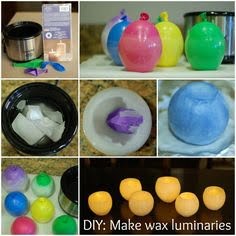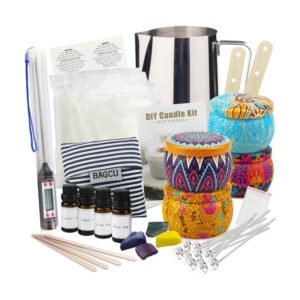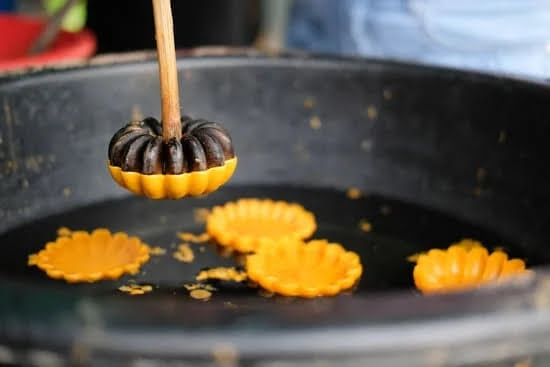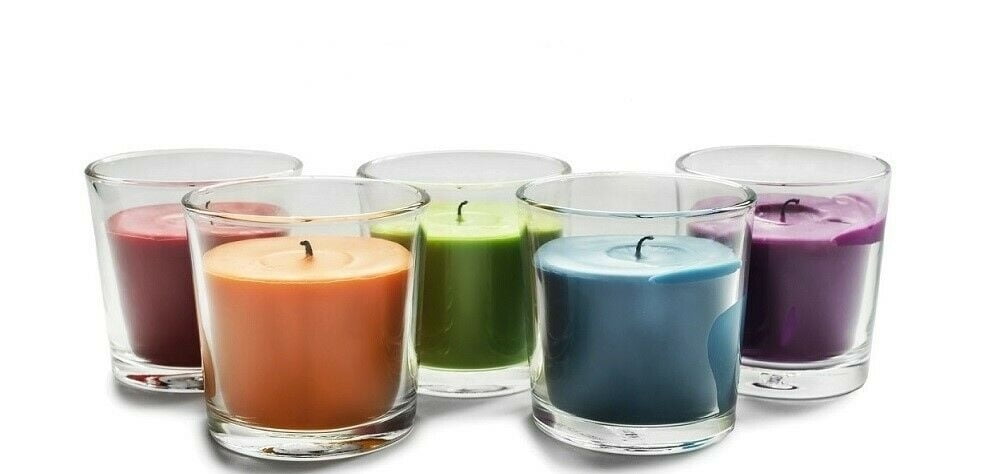Can you use candle color while making soap? Many people may not realize that the colorants used in candles can also be utilized in the soap-making process. In this article, we will delve into the relationship between candle color and soap making, exploring the basics of soap making, the use of natural colorants, and addressing common misconceptions about using candle color in soap.
The art of making soap involves a fascinating combination of ingredients and processes that result in a variety of beautiful and practical products. From essential oils to lye, each component plays a crucial role in creating a unique bar of soap. Understanding these fundamentals is essential for anyone interested in crafting their own soaps.
Natural colorants are increasingly popular in the world of soap making for their benefits both to the environment and to our skin. They provide vibrant hues without the use of artificial dyes or chemicals, appealing to those seeking all-natural products. Exploring natural alternatives can open up a world of creative possibilities for soap makers looking to experiment with colors.
Understanding the Basics of Soap Making
Soap making involves the use of essential ingredients and specific processes to create a quality product. The essential ingredients required for soap making include oils or fats, water, and sodium hydroxide (lye). These ingredients are mixed together through a process called saponification, which is the chemical reaction that occurs between the oils and lye to produce soap. Understanding the role of each ingredient and the saponification process is vital for successful soap making.
The Essential Ingredients
When it comes to soap making, the choice of oils or fats used can greatly impact the final product. Different oils have different properties that contribute to the texture, hardness, lather, and moisturizing qualities of the soap. Commonly used oils include coconut oil, olive oil, palm oil, and shea butter. Water is also an important ingredient in soap making as it dissolves the lye and facilitates the saponification process.
The Saponification Process
The saponification process is a crucial step in soap making as it transforms the combination of oils/fats and lye into soap. This chemical reaction results in the creation of glycerin (a natural byproduct) and soap. It is essential for soap makers to understand this process thoroughly in order to achieve successful results. Controlling factors such as temperature and mixing techniques can influence how well saponification occurs.
Overall, understanding the basics of soap making, including its essential ingredients and processes involved, is essential for anyone interested in creating handmade soaps. By grasping these fundamental aspects of soap making, individuals can develop a strong foundation for experimenting with different colorants and achieving desired results in their creations.
Exploring the Use of Natural Colorants in Soap Making
When it comes to the art of soap making, there are various options for adding color to your creations. One popular choice is the use of natural colorants, which not only provide vibrant hues but also offer several benefits. Natural colorants are derived from plants, fruits, vegetables, and minerals, making them a safer and more environmentally friendly option compared to synthetic dyes. Here are some key benefits of using natural colorants in soap making:
- Health Benefits: Natural colorants can provide additional health benefits to your skin due to their organic properties. For example, turmeric can have anti-inflammatory effects while spirulina might provide nourishing vitamins.
- Environmentally Friendly: By using natural colorants, you reduce the reliance on synthetic chemicals that can be harmful to the environment during production and disposal.
- Unique Aesthetics: Natural colorants can create unique and beautiful patterns in soap as they may react differently based on different factors like temperature and pH levels.
Incorporating natural colorants into your soap making process gives you the opportunity to experiment with a wide range of colors while ensuring that your product remains gentle on the skin. Whether you opt for classic options like mica powders and clays or unconventional choices such as beetroot powder or annatto seeds, natural colorants offer versatility and creativity in soap making.
Ultimately, understanding the benefits of using natural colorants in soap making can help you make informed decisions about how to best bring visual appeal to your handmade soaps while also considering the impact on both your skin and the environment. Can you use candle color while making soap? While it is possible to use candle colors as an alternative option for coloring your soap creations, it’s important to consider the potential risks associated with doing so.
Can You Use Candle Color in Soap Making? Addressing the Common Misconceptions and Myths
When it comes to soap making, there are various methods and techniques for adding color to your creations. One common question that arises is whether candle color can be used in soap making. There are misconceptions and myths surrounding this topic that need to be addressed in order to provide clarity on the matter.
Understanding the Difference Between Candle Color and Soap Color
One of the main misconceptions about using candle color in soap making is the belief that they can be used interchangeably. While both candle color and soap colorants serve the purpose of adding vibrant hues to a product, they are formulated differently for their respective uses. It is important to understand that what works for coloring candles may not necessarily work for coloring soaps due to differences in composition and performance requirements.
The Safety Concerns
Another common myth regarding using candle color in soap making is the assumption that it is safe to do so. However, it’s important to note that some candle colors contain ingredients that are not skin-safe or may react negatively when incorporated into soap. This can result in potential skin irritation or other adverse effects when using the colored soap.
Addressing the Myths
To address these misconceptions, it’s crucial for aspiring soap makers to educate themselves on the specifics of each type of colorant and its intended use. Rather than experimenting with potentially harmful materials, it’s advisable to stick with colorants specifically formulated for soap making. By doing so, you can ensure that your final product will be safe and of high quality.
The Potential Risks of Using Candle Color in Soap Making
Using candle color in soap making can be a tempting option for those looking to add vibrant and unique hues to their creations. However, it is important to understand the potential risks associated with this practice. While candle colorants may seem like a convenient choice, they are not suitable for use in soap making due to several reasons.
One of the main concerns with using candle color in soap making is the difference in formulation between candles and soap. Candle dyes are specifically designed to work with the waxes and heat involved in candle making, while soap colorants need to be able to withstand the alkalinity of the soap batter and still produce vibrant colors. This means that candle colorants can result in dull or unstable hues when used in soap, leading to unsatisfactory results for soap makers.
In addition, the chemical compositions of candle colorants versus soap colorants differ significantly. Candle dyes often contain ingredients that are not safe for use on the skin, such as solvents or metal compounds that can cause skin irritation or allergic reactions.
When these substances come into contact with the skin through the use of soaps containing candle colorants, they can pose potential health risks for consumers. It is essential to prioritize the safety and well-being of those who will be using your handmade soaps, which is why using candle color in soap making is not advisable.
| Potential Risks | Adverse Effects |
|---|---|
| Dull or unstable hues | Unsatisfactory results for soap makers |
| Skin irritation or allergic reactions | Potential health risks for consumers |
Tips for Using Candle Color in Soap Making
When it comes to using candle color in soap making, there are a few tips and techniques that can help you achieve the desired results. One important thing to keep in mind is that not all candle colors are suitable for soap making. Some may contain ingredients that can affect the quality of your soap, so it’s crucial to choose a safe and compatible option.
Additionally, candle dyes are often oil-based, which means they may not blend well with the water-based nature of soap making. To address this issue, it’s recommended to pre-dissolve the candle color in a small amount of oil or liquid glycerin before adding it to your soap mixture.
Another tip for using candle color in soap making is to start with a small amount and gradually increase as needed. This will allow you to control the intensity of the color and avoid ending up with an overly pigmented or unevenly colored soap.
It’s also important to keep in mind that certain candle dyes can morph or change color when exposed to the high pH environment of soap making. To prevent this from happening, consider testing a small batch of your chosen dye before incorporating it into larger quantities of your soap mixture.
In addition, experimenting with different techniques such as layering, swirling, or mixing multiple colors can create unique and visually appealing effects in your finished soaps. By being mindful of these tips and techniques, you can effectively use candle color in your soap making process while achieving vibrant and consistent results.
| Tips for Using Candle Color | Guidelines |
|---|---|
| Choose a safe and compatible option | Select candle colors that do not contain harmful ingredients for your soap. |
| Use small amounts | Add dye gradually to control the intensity of the color. |
Alternatives to Candle Color in Soap Making
Using natural colorants in soap making offers a safe and effective alternative to using candle color. Natural colorants not only provide vibrant hues to your soap, but they also offer additional benefits such as nourishing properties for the skin. Here are some popular natural colorants that you can use to color your soap:
- Clays: Clays such as French green clay, rhassoul clay, and kaolin clay not only add beautiful earthy tones to your soap but also have detoxifying and exfoliating properties.
- Herbs and Botanicals: Dried herbs and botanicals like calendula petals, lavender buds, and chamomile flowers can be used to create speckled or textured effects in your soap while providing gentle exfoliation.
- Natural Pigments: Ingredients like spirulina, turmeric, and beetroot powder can be used to achieve bright and bold colors in your soap while offering skin-loving benefits.
In addition to natural colorants, micas and oxides are also commonly used in soap making to achieve a wide range of colors. These mineral-based colorants are safe for use in soaps and can provide vibrant shades without the potential risks associated with using candle color.
When considering alternatives to candle color in soap making, it’s important to prioritize the safety of the end product as well as the well-being of those who will be using it.
By using natural colorants or other safe options for coloring soap, you can ensure that your final product is not only visually appealing but also free from any potential harm that may arise from using candle color. With proper research and experimentation, you can find the perfect coloring solution that aligns with your desired aesthetic while maintaining the integrity of your handmade soaps.
Conclusion
In conclusion, the question of whether candle color can be used in soap making has been thoroughly examined. While some may believe that candle color is a suitable option for coloring soap, it is important to consider the potential risks and drawbacks associated with this practice. The use of natural colorants in soap making not only offers numerous benefits, but also eliminates the possibility of adverse effects on the final product.
It is evident that the basics of soap making involve essential ingredients and processes that differ from those used in candle making. While both crafts may share similarities, such as the use of colorants, it is crucial to recognize the distinct properties and purposes of these colorants in each context. By understanding these differences, soap makers can make informed decisions about using safe and effective options for coloring their products.
In summary, while it may be tempting to use readily available candle color in soap making, it is advisable to explore alternative natural colorants specifically designed for use in soaps. By doing so, soap makers can ensure that their products are not only visually appealing, but also safe and free from potential risks associated with using unsuitable colorants. Ultimately, prioritizing the quality and safety of the final product should be at the forefront of every soap maker’s considerations.
Frequently Asked Questions
Can Candle Dye Be Used in Soap?
Yes, candle dye can be used in soap, but it’s important to note that not all candle dyes are safe for use in soaps. Some candle dyes contain ingredients that may not be suitable for skin contact.
It’s best to look for specific soap dyes that are formulated to be skin-safe and won’t cause any irritation or adverse reactions.
What Kind of Dye Do You Use in Making Soap?
When making soap, it’s recommended to use dyes specifically designed for soaps and other bath and body products. These dyes are typically water-soluble and specifically formulated to be skin-safe. They come in a wide range of colors and are easy to mix into your soap base to achieve the desired color.
What Can I Use to Color My Melt and Pour Soap?
There are several options available for coloring melt and pour soap. You can use soap dye, which is specifically formulated for use in soap making and comes in both liquid and powder forms.
Another option is natural colorants such as herbs, spices, clays, or botanical extracts, which can add beautiful hues to your melt and pour soap while offering natural benefits for the skin. Just be sure to research the stability of natural colorants in your particular recipe as some may fade over time or react with the ingredients in your soap base.

Welcome to my candle making blog! In this blog, I will be sharing my tips and tricks for making candles. I will also be sharing some of my favorite recipes.





